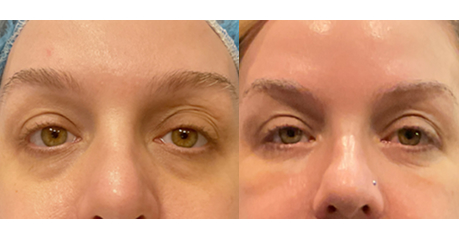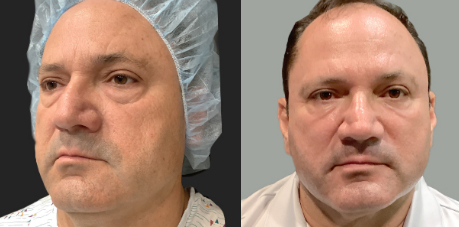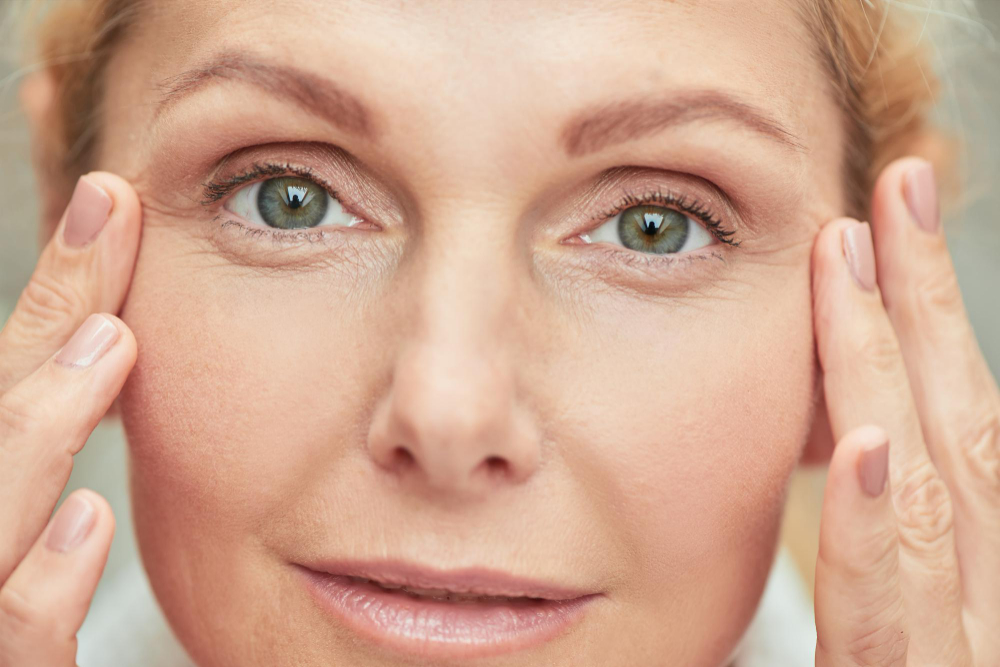- Search
- About
- Blog
- Careers
- Compounding Pharmacy
- Finance
- Hotels
- Our Team
- Our Mission
- Our Practice
- Virtual Consultations
- Areas We Serve
- Breast Reduction Bellevue Kirkland
- Breast Augmentation Bonney Lake
- Breast Augmentation Lake Tapps
- Breast Augmentation Hawaii
- Facial Fat Transfer in Bellevue & Kirkland With Dr. Khezri
- Tirzepatide For Weight Loss in Bellevue
- Tirzepatide Oral Tablets Kirkland & Bellevue
- Face
- Advanced Hairline Transplant
- Blepharoplasty
- Brow Lift
- Buccal Fat Removal
- Chin Augmentation
- Chin Liposuction
- CO2 Laser Resurfacing
- Direct Brow Lift
- Deep Plane Facelift
- Dimple Creation
- Ear Pinning
- Eyebrow Transplant
- Fat transfer to face
- Facelift
- Facelift With FX Laser Resurfacing
- Fat Transfer Under Eye
- Fat Transfer To Lips
- Grafts Neograft Follicular Unit Extraction
- Hair Transplant
- Hair Transplant Revision
- Hairline Lowering
- Laser Facelift
- Lip Lift
- Liquid Facelift
- Lower Blepharoplasty
- Lower Face Contouring
- Major Scalp Reduction
- Mini Facelift
- Midface Lift
- Minor Scalp Reduction
- Nano Fat Transfer For Your Under-Eyes
- Nano Fat Hair Transplant
- Neck Lift
- Neck Liposuction
- Nose Acne Laser Resurfacing
- Platysmaplasty
- Pumpkin Planing
- Revision Facelift
- Revision Rhinoplasty
- Rhinoplasty / Septoplasty
- Scalp Expander
- Submentoplasty
- Temporal Brow Lift
- Ultrasonic Piezo Rhinoplasty
- Upper Blepharoplasty
- Breast
- Breast Augmentation
- Breast Augmentation Exparel
- Breast Augmentation With Lift
- Breast Augmentation: Gummy Bear
- Breast Augmentation: Saline
- Breast Augmentation: Silicone
- Breast Implant Exchange
- Breast Lift
- Breast Lift With Implant Removal
- Breast Reconstruction Revision
- Breast Reduction
- Breast Reduction Revision
- Breast Revision
- Dual Plan Breast Augmentation
- En Bloc Breast Implant Removal
- Fat Transfer to Breasts
- Gynecomastia
- Ideal Breast Implant
- Mandibular Implants
- Revision Breast Lift
- Subfacial Breast Augmentation
- Transaxillary Breast Augmentation
- Transumbilical Breast Augmentation
- Vectra3D Imaging
- Body
- Arm Lift
- Arm Liposuction
- Back Liposuction
- Body Lift
- Brazilian Butt Lift
- Belt Lipectomy
- Bra Line Back Lift
- Breast Lift with Tummy Tuck
- Clitoral Hood Reduction
- Exparel Tummy Tuck
- Extended Tummy Tuck
- Fleur De Lis Tummy Tuck
- Hip Dip Fat Transfer
- Knee Liposuction
- Labiaplasty
- Liposuction
- Liposuction 360
- Liposuction on Thighs
- Male Tummy Tuck
- Mini Tummy Tuck
- Mommy Makeover
- Monsplasty
- Muscle Plication
- Plastic Surgery After Massive Weight Loss
- Revision Mommy Makeover
- Reverse Tummy Tuck
- Skin Removal After Weight Loss
- Thigh lift
- Tummy Tuck
- Tummy Tuck Revision
- Tummy Tuck With Thigh Lift
- Tummy Tuck After Weight Loss
- Tummy Tuck After Semaglutide
- Vaser High Definition
- Hymenoplasty
- Weight Loss
- Non-Invasive
- Bellafill
- Botox
- Botox For Bunny Lines
- Botox for Droopy Eyelids
- Botox For Hooded Eyes
- Botox For Gummy Smile
- Botox For Smile Lines
- Botox For Platysmal Bands
- Botox for Migraines
- Botox for Bruxism
- Botox For TMJ
- Botox for Calves
- Botox for Premature Ejaculation
- Botox for Hair Loss
- Botox For Plantar Hyperhidrosis
- Cheek Filler
- Chin Filler
- Dermal Facial Fillers
- Dysport
- Daxxify
- Hand Filler
- Jaw Filler
- Juvederm
- Kybella
- Lip Filler
- Laser Hair Removal For Men
- Laser Hair Removal For Women
- Marionette Line Filler
- Non-Surgical Hair Restoration
- Non-Surgical Rhinoplasty
- Non-Surgical Gynecomastia
- Penile Filler
- Radiesse
- Restylane
- Restylane Eyelight
- Rain Facial
- Smile Line Filler
- Sculptra
- Scrotum For Botox
- Trans Laser Hair Removal
- Tear Trough Filler
- Trapezius Botox
- Temple Filler
- ThermiVa
- Salmon PDRN Treatment
- Skin
- Keloid Scar Treatment
- Acne Treatment
- Brow Lamination
- Chemical Peel
- Combo Brows
- Dermaplaning
- Eyebrow Tint
- Free Skin Consultation
- IPL
- Laser Hair Removal
- Laser Patch Test Protocol
- Laser Scar Resurfacing
- Laser Tattoo Removal
- Lash & Brow Services
- Lash Extensions
- Lash Lift & Tint
- Led Light Therapy
- Melasma Treatment
- Microneedling
- Mole Removal
- Photofacial
- Powder Brows
- RF Microneedling for Scars
- RF Microneedling
- The Perfect Derma Peel
- VI Peel
- Waxing
- Zombie Carbon Laser Peel
- Medical Treatments
- Specials
- Pricing
- Gallery
- Call (425) 576-1700
Lower Blepharoplasty in Bellevue & Kirkland
Procedure Time
1 Hours
Recovery Time
1 week
Containing the thinnest skin on the face, the under eyes are susceptible to age, skin damage, and discoloration. With age, fat loss in the area can cause extra skin to bunch up under the eyes. It can also cause significantly hollowing and a darkened under eye look. This can age the face prematurely, especially when mixed with environmental damage. Lower eyelid surgery—or a lower blepharoplasty—helps the lower eyelid look younger. Dr. Ludwig Allegra of Northwest Face & Body provides the best lower blepharoplasty Bellevue and Kirkland offers.
Lower Blepharoplasty Before & After Photos
Case 01

Case 02

Lower blepharoplasty surgery removes excess skin below the eyes and tightens the skin for a more youthful appearance. As one of the first areas to begin showing age, patients often seek this surgery out at a younger age than facelift surgery. Though, it is often combined with other rejuvenating procedures as well.
Since it treats a relatively small area, blepharoplasty surgery is considered one of the least risky facial plastic surgeries. Patients also tend to recover well and fairly quickly when compared to other procedures. It is commonly performed alongside an upper blepharoplasty and may include fat injections or repositioning depending on your anatomy and goals.
Benefits & Risks
All surgeries come with a unique set of benefits and risks. Understanding and weighing them fairly before opting to go under the knife is essential to ensure a good outcome. Overall, the procedure has few risks and the benefits generally outweigh them. However, this will differ between patients. Dr. Allegra will discuss your individual risk profile during your consultation.
First, let’s examine the benefits and advantages of a lower blepharoplasty procedure. Some of the benefits include:
- Remove extra skin
- Correct eye bags
- Address puffiness
- Reposition or add fat
- Remove unnecessary fat
- Reduce wrinkles and fine lines
- Look more awake
- Brighter looking under eyes
- Reduce dark circles
- Improve vision (in some cases)
- Minimal scarring
- Natural looking results
- Maintain natural movement of the eyes and eyelids
- May minimize eye strain or tired eyes
- Quick procedure
- Easy to combine with other facial plastic surgeries
- Little recovery or downtime
- Minimal pain after surgery
- Performed by a plastic surgeon with decades of experience in eyelid surgery
As mentioned, lower eyelid surgery is fairly low risk for most patients. However, it does carry typical surgical risks and higher risks for certain demographics. Some of the possible risks and complications associated with lower blepharoplasty include:
- Infection
- Bleeding
- Prolonged swelling or bruising
- Dry eye
- Visible or raised scarring
- Injury to eye muscles or nerves
- Vision complications (normally temporary)
Transconjunctival vs. Transcutaneous Incisions For Lower Blepharoplasty
There are two surgical approaches to lower eyelid surgery. First, Dr. Allegra can use a transconjunctival incision which means making the incision inside the lower eyelid. This essentially removes the possibility of visible scarring. It also allows Dr. Allegra access to the structures necessary and keeps incisions pointed away from the eyeball.
A transcutaneous incision is the next option for a lower blepharoplasty. This is probably the most frequently used for under eye surgery. The incision hugs the edge of the lower lid which hides it in the natural transition from skin to the eye. This incision is further from the eye, but also has the possibility of causing visible scarring.
Sometimes both incisions are used during a lower blepharoplasty. This is largely dependent on your needs during surgery and your goals. Both tend to heal well and not scar noticeably. Though, there are times when one incision may be preferred over the other. If a large amount of skin needs to be removed, Dr. Allegra may recommend they transcutaneous incision. If there are concerns about the muscle, a transconjunctival incision may be recommended.
Before & After Lower Blepharoplasty
Consultation
During a consultation at Northwest Face & Body, you will meet with Dr. Allegra who will ask about your goals and concerns. He then may also inquire about aspects of your medical history and lifestyle. This helps him ensure you are a good candidate for both surgery and a lower blepharoplasty specifically. Finally, he will conduct a thorough examination of the eyelids and surrounding areas.
If Dr. Allegra believes you are a good candidate for blepharoplasty surgery, he will create an approach customized to your goals and anatomy. He will explain this in detail as well as any other procedures he may recommend and the results you can expect. Before leaving the office, you will receive a personalized price quote, any clearances you may require, and financing information.
Surgery
During surgery, Dr. Allegra will make the necessary incision either inside the lower lid or just below it. From there, he will remove unnecessary fat and release certain fat structures to allow him to tighten the muscles and skin. Dr. Allegra will then remove any extra skin left over and tighten it into a natural position.
During the stitching process, Dr. Allegra will ensure proper movement of the eyelids is maintained. This will also involve ensuring the proper function of the muscles as much as possible. Some muscle weakness following blepharoplasty is normal and usually temporary.
Blepharoplasty surgery is often performed under both local and general anesthesia. Regardless, patients remain perfectly comfortable during surgery. Local anesthesia can help reduce side effects and lessen recovery time.
Recovery
Lower blepharoplasty is a fairly short procedure with minimal post-surgery pain. However, it does still require a traditional surgical recovery. Many patients find that they do not need prescription pain medications. Many can manage their pain with Tylenol or similar over-the-counter pain relievers. Beyond limited activity, some of the post-operative instructions may include:
- Apply cold compresses and/or ice for the first two days
- Avoid applying makeup or certain skincare for a week
- Elevate the head of the bed or sleep/rest in a recliner
- Refrain from strenuous activities for at least two weeks
- Do not watch TV, read, or do anything that requires eye concentration for about two days
- Do not drive for at least three days
- Avoid ibuprofen and Aspirin
- Attend post-operative appointments
- Take medication as prescribed (only take pain medication if/when needed)
Every patient will undergo a personalized procedure. Thus their recovery instructions will also be personalized to match them and their procedure. Dr. Allegra will provide you with more detailed aftercare and recovery instructions at multiple points during the surgical process.
Frequently Asked Questions
How Long Does Swelling Last After Lower Blepharoplasty?
Visible swelling usually becomes unnoticeable in ten to fourteen days. Though, some minor, residual swelling may continue for a few months. Patients who smoke or do not follow recovery instructions may see their swelling last longer. Overall, blepharoplasty surgery does not generally cause major swelling for more than two or three days.
Dr. Allegra can better discuss the swelling you may experience following lower blepharoplasty once he understands your medical history, medications you take, and aspects of your lifestyle that may influence your recovery.
Is It Safe?
Yes, blepharoplasty surgery is considered one of the safest cosmetic procedures in all of plastic surgery. It rarely causes major issues or complications and patients generally are happy with their results. The average patient will not have significantly elevated risks during or after surgery. If a patient has inordinate risks, Dr. Allegra will likely recommend other treatments to address their concerns.
Are The Results of Lower Eyelid Surgery Permanent?
Like other anti-aging surgeries, lower blepharoplasty cannot completely stop aging. Therefore, extra, saggy skin can come back, but it often takes several years, if not well over a decade. Some aspects of the procedure may be essentially permanent such as corrections to vision that may impact how the skin later ages or if the muscles in the area are addressed. Patients can expect to enjoy their results for several years to come.
Will It Change My Eye Shape?
It can. Though, upper eyelid surgery or temple filler are often better at addressing eye shape than a lower blepharoplasty. If desired, an additional procedure can be added to change the shape of the eye.
How Much Is A Lower Blepharoplasty Surgery?
Lower blepharoplasty with Dr. Allegra at Northwest Face & Body starts at $4,285. This only accounts for the lower eyelid surgery, adding the upper lids or other procedures will incur additional charges. You can find a comprehensive and searchable list of our prices on our price list.
Northwest Face & Body also works with outside financing companies to help make your Bellevue upper blepharoplasty surgery fit your budget. You can find more about our plastic surgery financing options and links to apply on our financing page.
The Best Lower Blepharoplasty In Bellevue At Northwest Face & Body
Northwest Face & Body has served Bellevue and Kirkland for over thirty years. Featuring a luxury surgical suite on the shores of Lake Washington, the facility has accommodated thousands of patients for surgical and non-surgical procedures. Less than ten minutes from both Bellevue and Kirkland, Northwest Face & Body offers the best upper blepharoplasty Bellevue and Kirkland provides.
Dr. Ludwig Allegra is a plastic surgeon and otolaryngologist who has performed facial surgeries for three decades—in both medical and cosmetic capacities. His expertise and experience in the aesthetic and medical treatments of the face make him one of the most skilled plastic surgeons, especially in eyelid surgery.
To learn more and schedule a consultation, call us at 425-576-1700. You can also reach out online using our contact form, chat, or Price Simulator.
